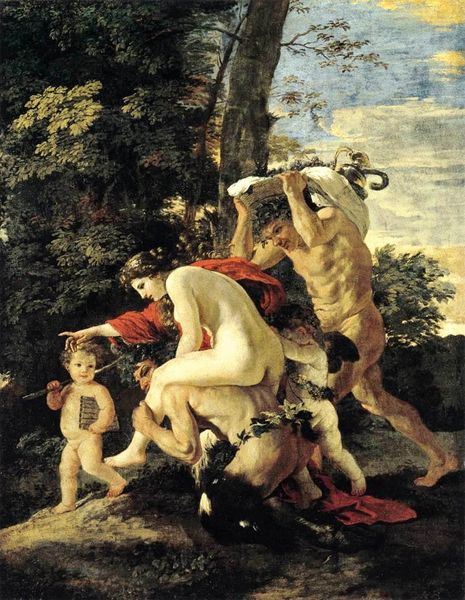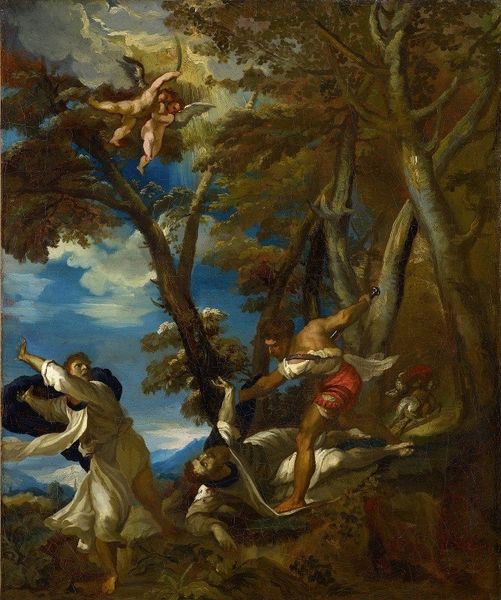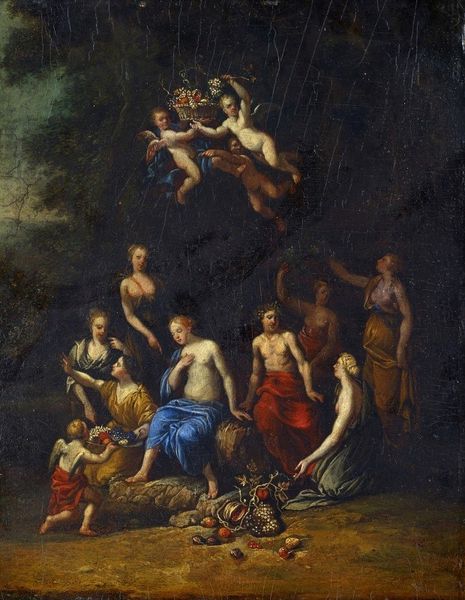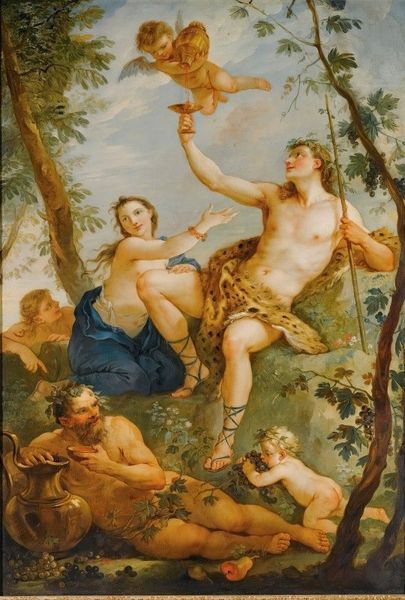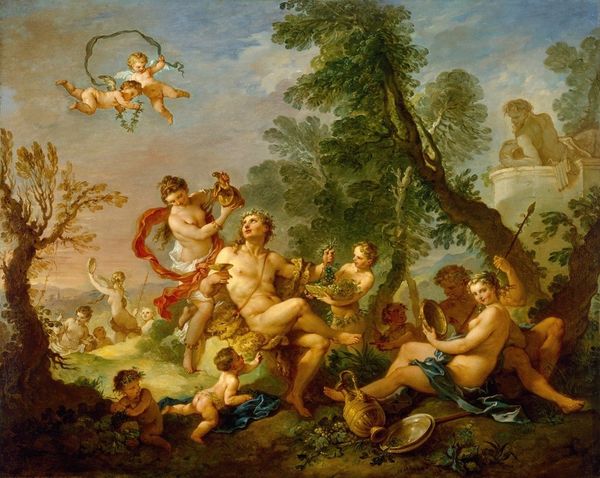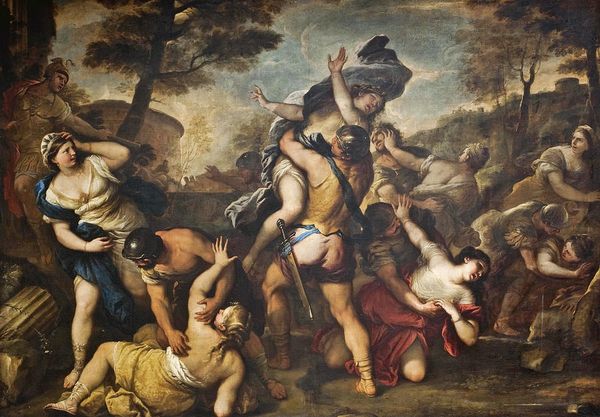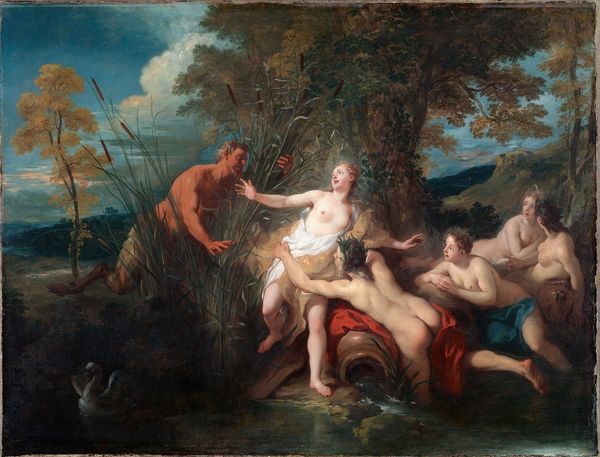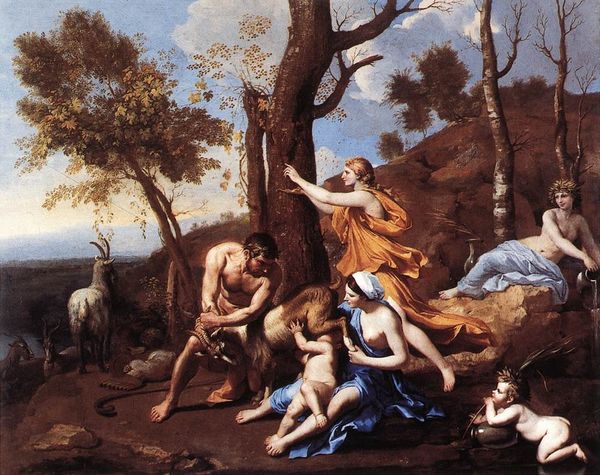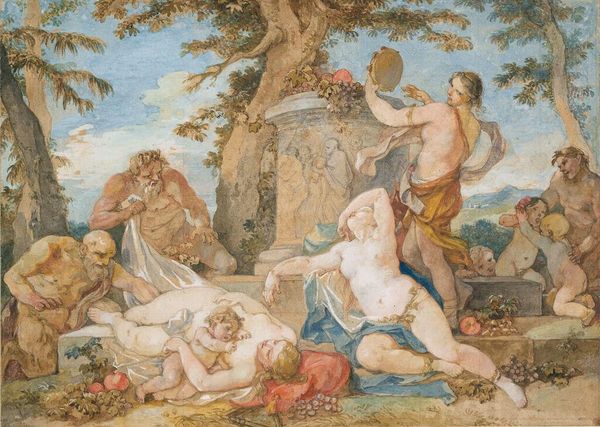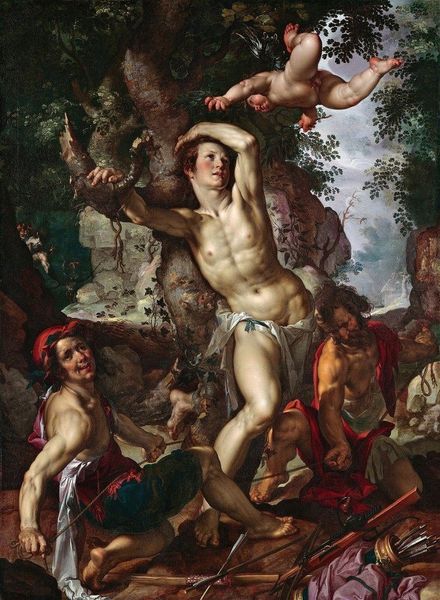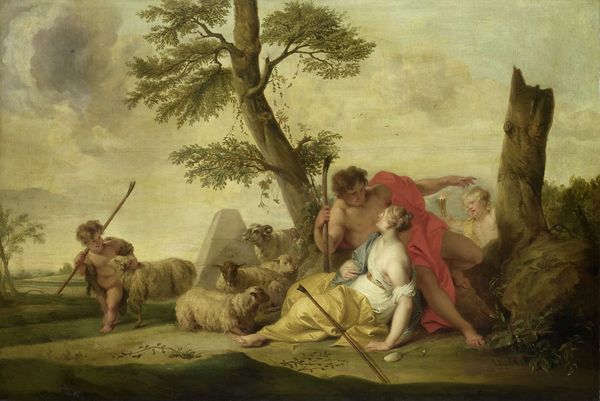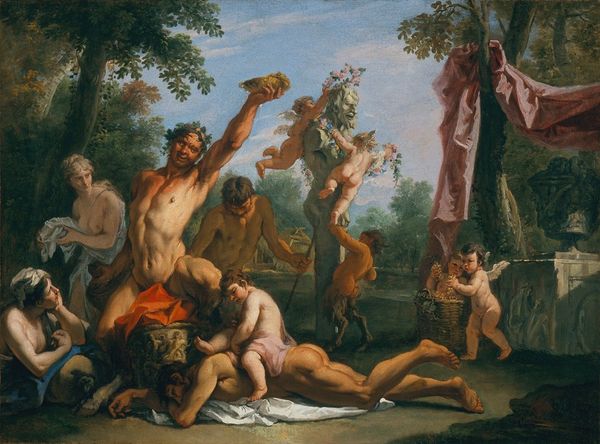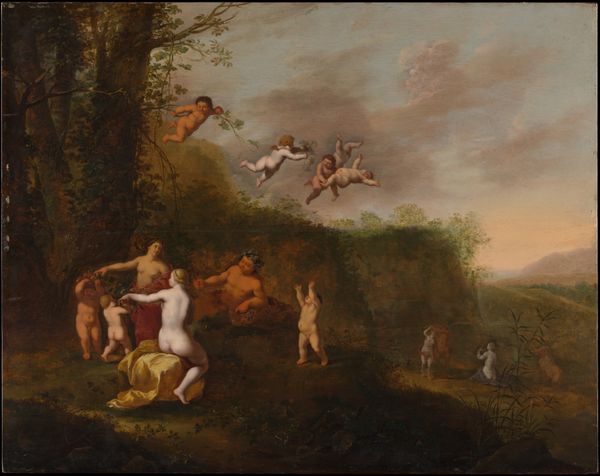
painting, oil-paint
#
baroque
#
painting
#
oil-paint
#
landscape
#
figuration
#
mythology
#
history-painting
#
nude
Copyright: Public Domain: Artvee
Editor: We are looking at Nicolas Poussin’s "Pan and Syrinx," created in 1637 using oil paint. The figures look like they are acting out a play, but something darker seems to be lurking. What do you see in this piece, more than just fleeing figures? Curator: Oh, the stories that oils can tell, and Poussin was certainly a verbose storyteller, wasn't he? Immediately I’m drawn to that liminal space, the point just before transformation, Syrinx's desperation before becoming reeds. You almost feel the god Pan's frustration too. Cupid looming overhead adds such an arch, theatrical flourish to the whole dramatic tension. It is all rather amusing, no? Editor: It does have that narrative, but also an energy I'm finding harder to describe. Curator: Think of it as a ballet frozen mid-leap. See how Poussin organizes chaos through this carefully considered composition, classical training always wins out, of course! How does this enforced sense of order impact the story's more unruly components, desire, and terror, even. Does it elevate the scene, or somehow reduce the dramatic effect? Editor: Reduce, definitely, especially compared to something more unrestrained like Rubens. Curator: An excellent counterpoint! Poussin consciously sought that restraint, a sort of intellectual elegance even amidst such primal scenes. It's like a beautiful dream teetering on the edge of becoming a nightmare. Editor: I see. So, he’s almost deliberately holding back, keeping us at a distance. Curator: Precisely. That push and pull, that controlled explosion, is where the painting finds its peculiar power. Something to sit with, isn't it? Editor: It really is, and thinking about his choices has opened up a completely new avenue for interpreting the scene. Curator: That is art's gift. Every time we engage with these past perspectives, new ways of seeing start emerging.
Comments
No comments
Be the first to comment and join the conversation on the ultimate creative platform.
